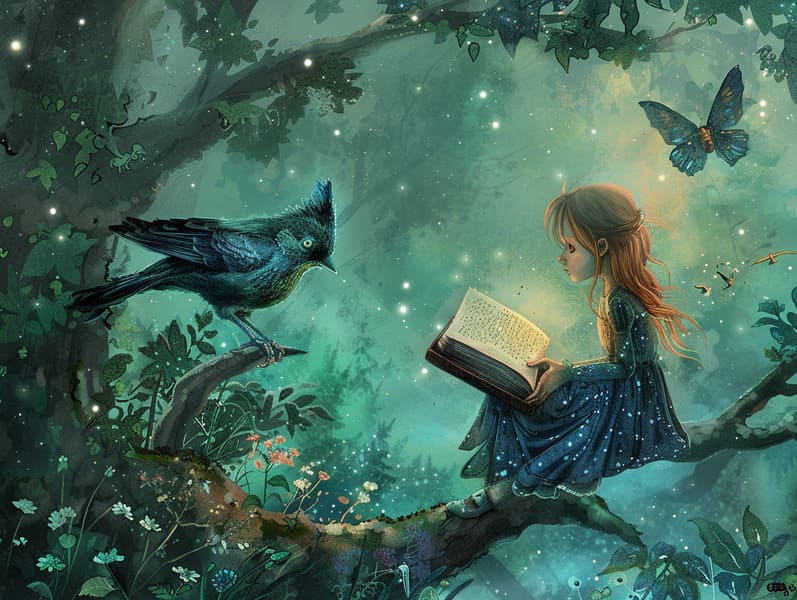The Rise of Vintage Fairy Tales and Its Immortal Majesty.
The Rise of Vintage Fairy Tales and Its Immortal Majesty.
Blog Article

Legendary fairy tales have legendary status. These tales have been transmitted from one generation to the next well before they were ever inscribed. They sprang from a variety of backgrounds, including African traditions. They were initially shared among mature audiences, often carrying themes and messages reflective of the societal norms and beliefs of the time.
The famous Grimm duo, Jacob and Wilhelm Grimm, were among the first to compile and release many of these beloved stories. Their published works, "Grimm's Fairy Tales," included tales like "Cinderella," "Hansel and Gretel," and "Schneewittchen," which have since become essentials in the world of beloved fairy tales. Similarly, the Danish author's enchanting narratives, such as "The Story of the Little Mermaid," and "The Duckling that Could," have captured hearts worldwide, ensuring their place in the pantheon of iconic fairy tales.
Despite their ancient origins, fairy tales remain as relevant as ever, especially as children's bedtime stories. These enchanting tales are now available in different formats, including colorful picture books, magical animations, and internet fairy tales.
Their persistent charm can be linked to several fascinating points:
Vital Lessons: Traditional fairy tales often provide important moral lessons. Tales like "The Boy Who Cried Wolf" teach the merit of truth, while "The Race of the Tortoise and the Hare" show the values of determination and unassuming nature. These narratives offer young ones clear distinctions between moral and immoral, helping to shape their moral compass in a soft yet lasting way.
Compassion and Insight: Old fairy tales frequently involve heroes facing struggles and tests, inspiring children to understand with their struggles and cheer for their triumphs. For instance, "Beauty and Her Beast" highlights the significance of seeing beyond looks to know the real character of a being, developing sympathy and appreciation.
Cultural Comprehension: Many classic fairy tales are steeped in the cultural contexts from which they came. Immersing in these tales can provide illuminating insights into different ways of life, encouraging a sense of world awareness and acknowledgment.
Inventiveness and Imagination: The fantasy-filled elements in traditional fairy tales—mythical creatures—activate children’s visions and dreams. These check here stories guide readers to magical realms, firing up inventive ideas and a sense of awe that continues a lifetime.
Ancient fairy tales are not only fantastical but also didactic. They serve as charming tools in promoting various cognitive and emotional skills in little ones. When timeless fairy tales are spoken out loud, they enhance language development by presenting new words and intricate sentence structures. This practice also cultivates auditory perception and mental focus, as young ones concentrate deeply, anticipating to see what happens next.
Furthermore, conversing about the themes and characters of fairy tales can advance cognitive skills and reasoning skills. Little ones are guided to spot patterns, forecast, and realize cause and effect. These discussions also further little ones convey their thoughts and feelings, enhancing their emotional intelligence.
In today’s modern era, the existence of online fairy tales has made these stories more attainable than ever. Web platforms and apps make available wide arrays of classic fairy tales that can be seen or listened through anytime, anywhere. Fairy tales narrated are particularly favored, featuring an entertaining method for young readers to savor these fantastical tales. Sound books and voiced videos carry characters and settings to life, often accompanied by magical background sounds and musical scores that enrich the story adventure.
The enduring charm of classic fairy tales lies in their ability to modify to contemporary times while preserving their central messages. Contemporary adaptations of these fairy tales often integrate more varied protagonists and modern settings, making them meaningful to today’s audience. However, the main ideas of boldness, goodness, and righteousness remain unchanged, continuing to reach audiences of all ages.
Fairy tales also offer a sense of serenity and comprehensibility. They confer upon a orderly narrative with a straightforward beginning, middle, and end, often wrapping up with the ending of conflicts and the triumph of honesty over deceit. This certainty can be relieving for little ones, distributing a sense of assuredness in an fluid world.
Traditional fairy tales continue to captivate and inform new generations, maintaining their grace and impact in modern society. As children's night stories, they showcase a perfect blend of captivation and insight, promoting moral values, empathy, and creativity. The existence of online storybooks and the well-received status of fairy tales recited promise that these old fairy tales remain accessible to new generations.
By continuing and distributing these tales, we continue to exalt the rich tapestry of myths and cultural heritage. Whether you are exploring a richly illustrated book, seeing a online library, or hearing an voice book, the radiance of children's fairy tales is always within reach. These tales emphasize of the undying effect of storytelling and its ability to bond us across time and space.
Be it you are discovering a artistically illustrated book, discovering a web-based library, or hearing an sound book, the mystique of Grimm's fairy tales is always within reach.
These stories teach us of the unceasing force of stories and its ability to join us across time and space, forming a connection that delights and instructs alike.